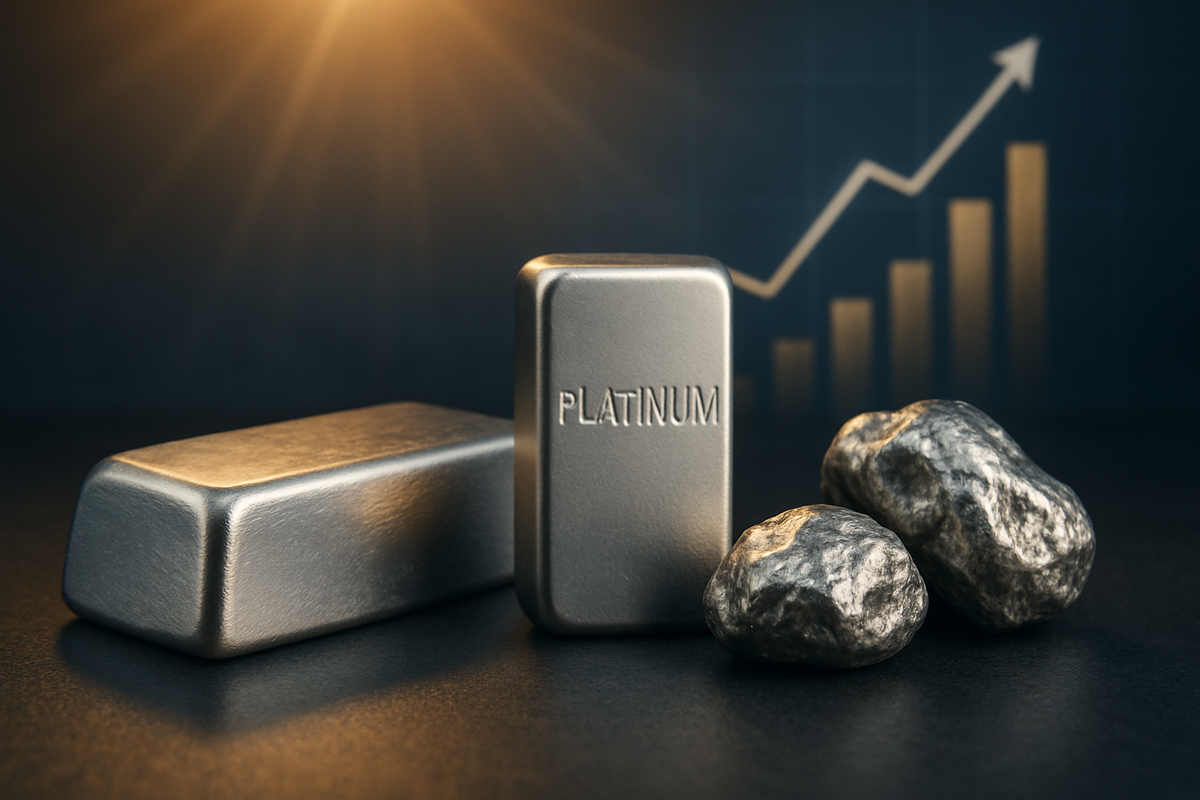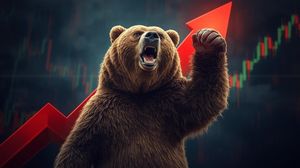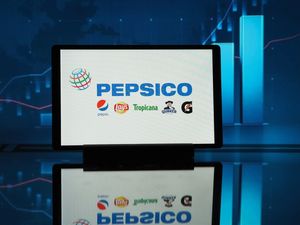
October 10, 2025 – While gold has long reigned supreme as the quintessential safe-haven asset, a dynamic shift is underway in the precious metals market. As of October 2025, investors are increasingly looking beyond the yellow metal to harness the unique potential of silver, platinum, and palladium. These industrial and monetary metals are not merely alternatives but potent portfolio superchargers, each offering distinct drivers for growth amidst a landscape characterized by persistent inflation, geopolitical tensions, and a global pivot towards green technologies.
The market sentiment for these often-overlooked precious metals is overwhelmingly bullish. Silver has shattered historical records, surpassing the $50 per ounce mark, driven by robust industrial demand from solar and electronics sectors alongside its traditional role as a monetary metal. Platinum, once trading at a discount, has become the top-performing precious metal this year, fueled by severe supply deficits and its critical role in the burgeoning hydrogen economy. Even palladium, despite past volatility, shows signs of stabilization and renewed interest, riding the broader wave of tangible asset appreciation. This burgeoning appeal signals a strategic re-evaluation by investors seeking diversified exposure and higher growth potential beyond gold's established, yet less volatile, trajectory.
The Unique Alchemy: Silver, Platinum, and Palladium's Distinctive Edge
While gold offers stability, silver, platinum, and palladium present a compelling case for portfolio diversification, each with unique characteristics that set them apart. These metals are not merely safe havens; they are integral to modern industry, linking their value to technological advancements and economic growth in ways gold often does not. As of October 2025, their distinct properties and demand profiles make them invaluable for investors seeking to supercharge their returns.
Silver, often dubbed "poor man's gold," is anything but in terms of performance. It is the most electrically and thermally conductive of all metals, making it indispensable in electronics, particularly in the rapidly expanding green energy sector. Solar panels, electric vehicles (EVs), and 5G infrastructure are voracious consumers of silver, driving a structural demand that gold, as primarily a monetary asset, does not share. The silver market has been in a persistent supply deficit for five consecutive years, with demand projected to outstrip supply by over 180 million ounces in 2025. This fundamental imbalance, coupled with its role as a safe haven, has propelled silver prices past the $50-$51 per ounce mark in early October 2025, a level not seen in over a decade. Its higher volatility, approximately 1.7 times that of gold, means it offers greater upside potential but also requires careful risk management.
Platinum, known as the "rich man's gold" historically, has staged a remarkable comeback, becoming the top-performing precious metal in 2025. This dense, corrosion-resistant metal is crucial for automotive catalytic converters, particularly in diesel engines, and is increasingly substituting for costlier palladium in gasoline vehicles. Beyond automotive, platinum is a vital catalyst in the chemical and pharmaceutical industries and is poised for significant growth in the emerging hydrogen economy, where it is essential for fuel cells and green hydrogen production. The platinum market is facing a severe deficit, estimated at 850,000 ounces in 2025, marking the third consecutive annual shortfall. This is largely due to underinvestment and operational challenges in major producing regions like South Africa, which accounts for over 70% of global supply. Trading at a significant discount to gold, platinum offers a contrarian play with substantial long-term growth potential tied to decarbonization efforts.
Palladium, while experiencing a more volatile journey, has also shown renewed strength, gaining nearly 49% year-to-date by October 2025, mirroring gold's performance. Its primary demand driver remains automotive catalytic converters, particularly for gasoline vehicles. However, the market faces headwinds from the ongoing shift to EVs and increased substitution with platinum due to price differentials. Despite these challenges, palladium's unique ability to purify hydrogen and its use in electronics and dentistry maintain a baseline demand. Supply remains inelastic, primarily as a byproduct of platinum and nickel mining in geopolitically sensitive regions like Russia and South Africa. While its recent rally may contain speculative elements, its role in niche industrial applications and potential for supply shocks offer a distinct risk-reward profile for a diversified portfolio.
Corporate Winners and Losers in the Precious Metals Rush
The dynamic shifts in the silver, platinum, and palladium markets are creating distinct winners and losers among public companies, influencing everything from mining operations to industrial manufacturing and investment vehicles. As of October 2025, the robust demand and supply deficits for silver and platinum are significantly bolstering the fortunes of their primary producers and related investment funds, while palladium's future presents a more nuanced outlook.
Silver's Ascendance: A Boon for Miners and Green Tech
The meteoric rise of silver prices to over $50 per ounce is a direct windfall for primary silver mining companies. These firms are experiencing substantial increases in revenue and profit margins, which can be reinvested into exploration and development. Key beneficiaries include Hecla Mining Company (NYSE: HL), one of the largest U.S. silver producers, whose diversified output of silver, gold, lead, and zinc positions it strongly. Similarly, Pan American Silver Corp. (NASDAQ: PAAS), with extensive operations across Latin America and Canada, and First Majestic Silver Corp. (NYSE: AG), a pure-play silver producer focused on Mexico, are seeing their fortunes tied directly to silver's bull run.
Beyond mining, the industrial demand for silver, particularly in green technologies, means certain industrial users also stand to gain. While higher input costs are a factor, companies in the booming solar panel and advanced electronics sectors, with strong market positions, are likely to thrive. First Solar, Inc. (NASDAQ: FSLR), a leading solar panel manufacturer, benefits from the massive growth in solar installations, potentially allowing it to absorb or pass on increased silver costs. Similarly, major semiconductor firms like NVIDIA Corporation (NASDAQ: NVDA) and Advanced Micro Devices, Inc. (NASDAQ: AMD), whose high-performance electronics rely on silver, are well-positioned due to overwhelming demand for their products in AI and computing infrastructure. Conversely, smaller, less diversified consumer electronics manufacturers with thin margins and limited pricing power could struggle with rising silver input costs.
Platinum's Revival: A Catalyst for South African Miners
Platinum's impressive rally to $1,600-$1,660 per ounce is bringing significant prosperity to the companies that extract it. Given that South Africa accounts for over 70% of global platinum production, its miners are at the forefront of this boom. Sibanye-Stillwater Limited (NYSE: SBSW), a major South African PGM producer, is a prime example, with its CEO acknowledging the unexpected surge's positive impact. Other prominent South African players like Anglo American Platinum Limited (JSE: AMSP) and Impala Platinum Holdings Limited (JSE: IMP) are also poised for substantial gains from sustained high prices and robust demand.
The automotive industry's increasing substitution of platinum for palladium in catalytic converters further benefits companies like Johnson Matthey Plc (LSE: JMAT), a global leader in sustainable technologies and automotive catalysts. Their expertise in PGM chemistry allows them to adapt to this shift, potentially growing their market share. Investment vehicles like the Aberdeen Standard Physical Platinum Shares ETF (NYSE Arca: PPLT) are also experiencing increased assets under management as investors seek exposure to platinum's strong performance and long-term prospects.
Palladium's Precarious Path: A Mixed Bag
Palladium's recent price appreciation to around $1,500 per ounce, while significant, is viewed with caution due to underlying fundamental challenges. For mining companies, those with diversified PGM portfolios, such as Norilsk Nickel (MCX: GMKN) (a major Russian producer) and Sibanye-Stillwater Limited (NYSE: SBSW), can still benefit from current prices, especially if they maintain strong cost controls. Norilsk Nickel, in particular, is actively seeking to diversify palladium applications beyond automotive to mitigate future demand erosion.
However, the long-term outlook for palladium-focused entities remains challenging. The global shift towards electric vehicles, which do not use palladium, and the continued substitution with platinum in gasoline vehicle catalysts are eroding its primary demand base. High-cost, palladium-centric miners, or traditional automotive OEMs that are slower to transition to EVs or adopt platinum-based catalysts, could face sustained pressure from diminishing demand and potential oversupply in the coming years. While ETFs like the Aberdeen Standard Physical Palladium Shares ETF (NYSE Arca: PALL) might see short-term speculative interest, investors are advised to exercise caution given the uncertain long-term demand fundamentals.
Wider Significance: A New Era for Industrial Precious Metals
The recent surges in silver, platinum, and palladium prices extend far beyond mere market fluctuations; they signal a profound shift in global economic and industrial paradigms. These trends are deeply intertwined with the overarching themes of decarbonization, the urgent need for supply chain resilience, and an increasingly volatile geopolitical landscape, creating ripple effects across industries and prompting new regulatory considerations.
The global push towards decarbonization is arguably the most significant long-term driver for silver and platinum. Silver has cemented its role as a critical "green metal," indispensable in solar photovoltaic (PV) technology, electric vehicles (EVs), and green hydrogen production. This industrial demand is projected to consume record amounts of silver, creating structural upward pressure on prices. Platinum is similarly central to the hydrogen economy, serving as a key component in hydrogen fuel cell electric vehicles (FCEVs) and electrolyzers for green hydrogen production. This emerging demand is expected to add millions of ounces to annual platinum consumption by 2030-2035, fundamentally reshaping its market. While palladium's traditional automotive demand faces headwinds from battery electric vehicles, it is finding new applications in hybrid vehicles and advanced membrane technologies for hydrogen, indicating a complex but evolving role in the green transition.
Supply chain resilience has become a paramount concern, and the concentrated production of these metals highlights significant vulnerabilities. Over 70% of global silver production emanates from just five countries, making it susceptible to geopolitical tensions and regulatory changes, such as Mexico's mining overhauls or potential U.S. tariffs. Platinum's supply is even more concentrated, with South Africa accounting for approximately 80% of mined output, and Russia contributing a significant portion of palladium. These concentrations mean that energy disruptions, labor strikes, and geopolitical events in these regions can, and have, severely impact global supply, leading to price spikes and exacerbating existing deficits. The inelastic nature of supply, with new mines taking over a decade to develop, means market responses to price signals are slow, contributing to persistent shortfalls and inventory depletion.
Geopolitical shifts are also playing a crucial role, transforming these metals into strategic assets. Silver has emerged as a safe-haven asset amidst global conflicts and trade disputes, with central banks accumulating reserves and a notable redistribution of physical silver from Western to Eastern markets. Platinum prices are directly impacted by broader U.S.-China trade tensions and instability in major producing regions. For palladium, its market is highly sensitive to events involving Russia, a dominant supplier, with past sanctions and ongoing geopolitical tensions directly contributing to price volatility. These geopolitical factors underscore the strategic importance of these metals beyond their industrial applications, as nations increasingly view them through a lens of resource security.
Historically, the current silver surge, pushing past $50 per ounce, evokes comparisons to the 1980 "Hunt brothers" episode. However, the current rally is largely underpinned by fundamental industrial demand from green technologies, suggesting a more structural and enduring shift rather than purely speculative manipulation. Platinum's appreciation during times of international conflict also has precedents, with its strategic value recognized even during World War II when its non-military use was restricted. These historical parallels remind investors of the metals' dual roles as industrial necessities and hedges against global instability, although the current context adds the unprecedented dimension of a global energy transition.
What Comes Next: Navigating the Future of Precious Metals
As of October 2025, the trajectories for silver, platinum, and palladium are set against a backdrop of global economic shifts, evolving industrial demands, and persistent geopolitical uncertainties. Both short-term fluctuations and long-term structural changes will necessitate strategic adaptations from investors and companies alike, presenting a landscape ripe with both opportunities and challenges.
In the short-term (next 6-12 months), silver is poised to continue its remarkable rally. Driven by record industrial demand from solar panels, EVs, and electronics, coupled with strong investment interest as a safe-haven and inflation hedge, prices are likely to remain elevated, potentially consolidating above $50-$51 per ounce, with some forecasts even eyeing $56 by year-end. Platinum is also expected to maintain its strong performance, supported by resilient automotive demand (due to substitution for palladium), recovering jewelry sales, and persistent supply deficits from South Africa. Its role as a "contrarian" play amidst gold's highs will likely continue to attract investor rotation. Palladium, however, faces a more challenging short-term, with structural headwinds from the EV transition and substitution risks. While speculative buying might offer brief rallies, its market is projected to shift into a surplus in 2025, suggesting continued volatility.
Looking at the long-term (1-5+ years), silver's outlook remains overwhelmingly bullish. Its indispensable role in green technologies ensures sustained industrial demand, and with global economic growth and persistent supply deficits, some analysts predict prices could reach $100 by 2028 and even $200 by 2034. Platinum's long-term prospects are similarly bright, primarily fueled by the burgeoning hydrogen economy. Demand from hydrogen fuel cell applications is forecast to significantly increase, making it a critical metal for the future of clean energy. This emerging sector, combined with potential declines in mining output, could drive platinum prices substantially higher. In contrast, palladium's long-term future is less certain. The accelerating adoption of battery electric vehicles poses a fundamental structural headwind, as its primary demand from gasoline catalytic converters diminishes. While hybrid vehicles might offer some near-term demand, analysts generally maintain a subdued long-term outlook, with forecasts suggesting potential declines towards $617 by 2028.
For companies, strategic pivots are essential. Mining firms should consider diversifying their portfolios, prioritizing metals with strong long-term demand drivers like silver and platinum, especially those linked to green energy. Relentless focus on operational efficiency, cost management, and accelerated exploration will be crucial to navigate inflationary pressures and declining ore grades. Industrial users, particularly in the automotive sector, must invest heavily in R&D for alternative materials or adapt to changing demand patterns, such as developing platinum-based catalysts or hydrogen fuel cell technologies. Building resilient supply chains, given the geopolitical risks in major producing regions, is also paramount.
Investors need to adapt their strategies beyond a sole focus on gold. Diversifying into silver and platinum offers exposure to robust industrial growth and unique safe-haven properties. For these metals, emphasizing their industrial applications in green energy and hydrogen technology is key to understanding their long-term growth catalysts. Palladium, given its volatility and structural headwinds, is better suited for short-term, speculative trading rather than long-term investment, requiring careful monitoring of automotive trends. Utilizing a mix of physical bullion, ETFs, and mining equities can provide diversified exposure, while consistent macroeconomic monitoring of inflation, interest rates, and geopolitical developments remains critical. Platinum's current discount to gold also presents a potential contrarian opportunity.
Emerging market opportunities lie in silver's dual appeal (industrial and safe-haven) and platinum's pivotal role in the hydrogen economy. Both metals benefit from persistent supply deficits and historical undervaluation relative to gold. Challenges include the inherent volatility of silver and palladium, the structural headwinds facing palladium from the EV transition, and the omnipresent risk of economic downturns or unexpected monetary policy shifts. The most likely base case scenario for the coming years involves silver and platinum maintaining strong performance, driven by green energy and industrial demand, while palladium faces continued challenges but finds some price floor due to residual hybrid demand and short-term trading opportunities. Companies that adapt and diversify will succeed, and investors with a balanced precious metals portfolio should achieve solid returns.
Conclusion: Supercharging Portfolios in a Shifting Landscape
As of October 2025, the investment landscape for silver, platinum, and palladium has evolved dramatically, offering investors powerful avenues to supercharge portfolios beyond the traditional confines of gold. These "white metals" are not merely alternatives but distinct investment opportunities, each with unique demand drivers, supply dynamics, and sensitivities to global macroeconomic and geopolitical forces.
Key Takeaways underscore the divergent paths of these metals. Silver has emerged as a standout performer, surging over 70% year-to-date and briefly touching $51 per ounce. Its dual role as a safe-haven asset and an indispensable industrial metal in green technologies like solar panels and electronics, coupled with persistent supply deficits since 2021, positions it for continued strength. Platinum has also staged a remarkable rally, outperforming both gold and silver, reaching a ten-year high. This is primarily driven by severe structural supply deficits from South Africa and broad-based demand from the automotive sector (through substitution for palladium), industrial uses, and a growing role in the hydrogen economy. Palladium, while experiencing recent rallies, faces a more complex future. Its heavy reliance on automotive catalytic converters is challenged by the accelerating shift to EVs and the ongoing substitution with platinum, leading to projections of a market surplus in 2026 despite persistent supply-side geopolitical risks.
Moving forward, the market assessment suggests a bullish outlook for silver and platinum, fueled by their critical roles in the green energy transition, ongoing supply constraints, and a supportive macroeconomic environment of anticipated interest rate cuts and geopolitical uncertainty. Palladium, however, will likely continue to face structural headwinds, making its long-term trajectory less certain. The broader precious metals complex benefits from a weaker U.S. dollar, persistent inflation concerns, and continued central bank gold purchases, which tend to have a positive spillover effect.
The significance and lasting impact of these trends highlight a fundamental shift in how investors and nations perceive value and security. Silver, platinum, and palladium offer crucial diversification, linking portfolios to the evolving global economy and decarbonization efforts. Their inherent scarcity, universal recognition, and vital industrial applications distinguish them from fiat currencies, providing a powerful hedge against inflation and economic instability. These metals collectively serve as a barometer of global health and stability, reflecting the intricate connections between industrial progress, resource security, and geopolitical tensions.
For investors in the coming months, a well-informed and diversified strategy is paramount:
- Monitor Macroeconomic and Monetary Policies: Keep a close eye on central bank decisions regarding interest rates and inflation reports, as these will significantly influence precious metal prices.
- Track Evolving Industrial Demand: For silver, observe the growth of solar energy, EVs, and electronics. For platinum, monitor automotive sector shifts (ICE, hybrid, fuel cell) and the growth of the hydrogen economy. For palladium, watch the rate of platinum substitution and EV market penetration.
- Stay Alert to Supply Dynamics and Geopolitical Events: Supply constraints from key mining regions like South Africa and Russia, alongside broader geopolitical tensions and trade policies, can introduce substantial volatility.
- Understand Market Volatility: Be prepared for price swings, especially in silver and palladium, and consider technical analysis to identify key levels.
- Consider Diversified Exposure: Beyond gold, silver and platinum offer compelling arguments for inclusion in a well-diversified portfolio through physical bullion, ETFs (e.g., iShares Silver Trust (NYSE Arca: SLV), Aberdeen Standard Physical Platinum Shares ETF (NYSE Arca: PPLT)), or shares in major mining companies like Sibanye-Stillwater Limited (NYSE: SBSW).
- Prudent Portfolio Allocation: While precious metals are an important hedge, they should complement other assets, with a common recommendation of limiting the precious metals portion to around 10% of a total portfolio.
This content is intended for informational purposes only and is not financial advice







